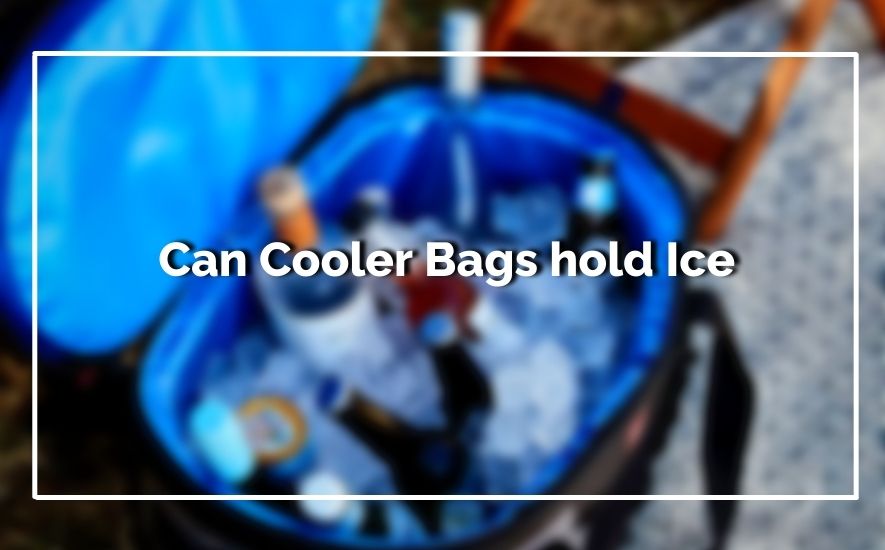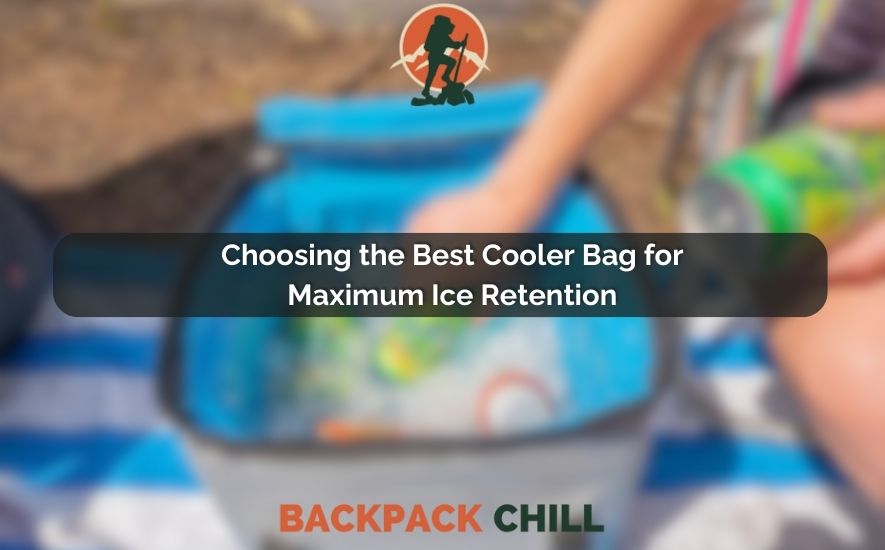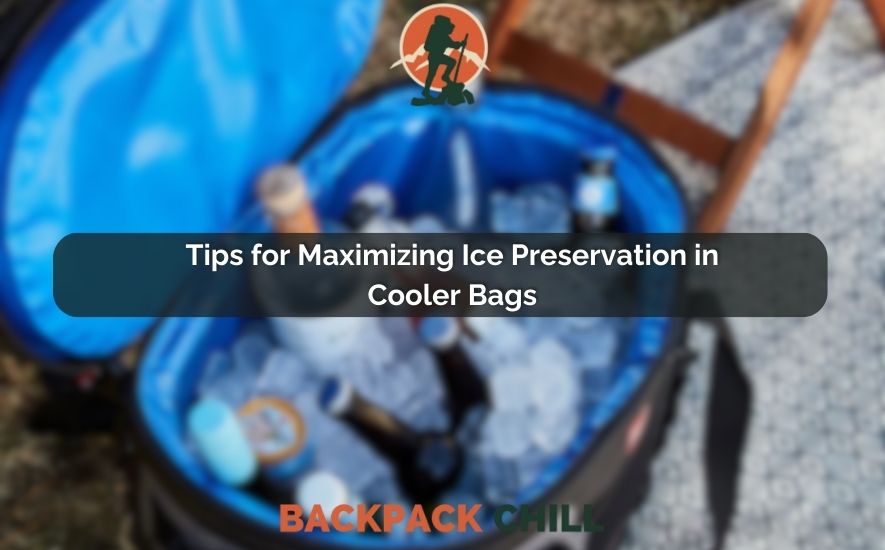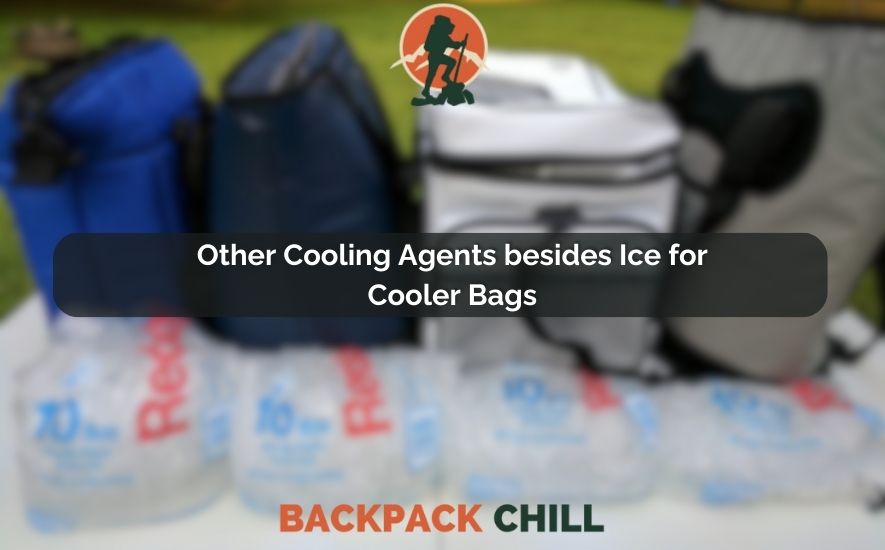Physical Address
304 North Cardinal St.
Dorchester Center, MA 02124

Are you planning a day at the beach, a picnic in the park, or a road trip with friends? Chances are, you’ll need a way to keep your beverages and snacks cool and refreshing. This is where cooler bags can come to the rescue! These portable and convenient bags are designed to insulate your drinks and food, maintaining their chill for extended periods. But, you might be wondering, can cooler bags really hold ice effectively?
Can Cooler Bags hold Ice? Yes, can cooler bags are indeed capable of holding ice. These specially designed bags utilize various insulating materials, such as foam, reflective liners, or high-quality fabrics, to trap the cold air inside and prevent the heat from seeping in.
In this article, we’ll delve into the science behind can cooler bags, their insulation capabilities, and how they fare in keeping ice from melting away.
Whether you’re looking to keep your favorite drinks icy cold or store perishables for a picnic, understanding the ins and outs of cooler bags and their ice-holding potential will help you make the right choice for your next adventure.
Testing the ice-holding capacity of cooler bags is crucial for several reasons. Firstly, it allows manufacturers to assess and improve the quality of their products.
By understanding the performance of their cooler bags, they can make necessary modifications to enhance insulation and design, resulting in better user satisfaction.
Secondly, consumers benefit from this information as they can make well-informed decisions when purchasing cooler bags. Knowing the duration for which a bag can retain ice ensures that perishable items remain safe and fresh during extended periods, preventing food spoilage and potential health hazards.
To accurately assess the ice-holding capacity of cooler bags, a standardized testing methodology is essential. The test should be conducted under controlled conditions, using identical quantities of ice and similar ambient temperatures for each bag. Start by pre-cooling the bags to ensure consistency in starting temperatures.
Fill each bag with a predetermined quantity of ice and seal them securely. Place the bags in a controlled environment with constant temperature monitoring. Regularly check the ice condition, and record the time it takes for the ice to fully melt and reach a specific temperature threshold. This data will provide insights into the bag’s ability to maintain a cold environment.
Various factors can influence the ice-holding capacity of cooler bags. The insulation material and thickness significantly impact the bag’s ability to retain cold temperatures.
Bags with thicker insulation made of high-quality materials generally perform better. The quality of the seals and closures also plays a crucial role. Airtight seals prevent cold air from escaping and warm air from entering the bag.
Additionally, the initial temperature of the items placed inside the cooler can affect the overall performance. Pre-chilling perishables before placing them in the bag helps maintain a lower temperature for a more extended period.
Understanding the results of ice-holding capacity testing directly affects users’ experience and the success of their outdoor activities. Cooler bags with excellent ice-holding capabilities can keep beverages chilled and perishables fresh, ensuring a delightful outing.
Those planning extended camping trips or long journeys will benefit from choosing cooler bags that perform well in ice-holding tests. Moreover, such knowledge empowers consumers to compare different brands and models, considering factors like size, portability, and ice-holding capacity to make the most suitable choice for their specific needs.

One of the key factors influencing ice retention is the insulation technology used in the cooler bag. High-quality cooler bags usually incorporate thick insulation layers, such as closed-cell foam or vacuum-insulated panels. These materials effectively trap the cold air inside the bag, preventing heat from entering and ensuring ice stays frozen for longer periods.
The material and construction of the cooler bag significantly impact its overall performance. Look for bags made from durable and waterproof materials, such as nylon or polyester. Reinforced seams and leak-resistant zippers are also essential to maintain the integrity of the cooler and prevent any water leakage that could diminish ice retention.
The size and capacity of the cooler bag play a crucial role in its ice retention capabilities. Larger cooler bags tend to have more space for ice packs, which can help prolong ice retention. However, it’s essential to strike a balance between size and portability, as a smaller, well-insulated bag can outperform a larger one with inadequate insulation.
Consider your specific needs and usage habits before choosing a cooler bag. If you plan to be outdoors for an extended period, a high-end cooler bag with superior ice retention might be worth the investment.
On the other hand, for shorter trips or everyday use, a mid-range cooler bag could suffice. Additionally, take into account the external environment, as extremely hot temperatures might challenge even the best cooler bags.
While the primary goal is maximum ice retention, other features can enhance the overall functionality of the cooler bag. Look for models with anti-microbial linings to prevent the growth of mold and mildew.
External pockets and bungee cords are handy for carrying extra supplies. Consider whether the bag has comfortable handles or shoulder straps, especially if you’ll be carrying it over long distances.
The design and construction of cooler bags significantly impact their ice retention capabilities. Coolers with sturdy construction and proper sealing mechanisms, like airtight zippers, reinforced seams, or gasket seals, prevent warm air from entering and cold air from escaping. This effective barrier against external heat helps maintain a consistently low internal temperature, extending ice retention.
The surrounding ambient temperature and usage conditions directly affect how long ice will last in a cooler bag. Cooler bags exposed to high temperatures, direct sunlight, or placed in a hot car will experience faster ice melt due to increased heat transfer. On the other hand, using cooler bags in shaded or cooler environments, coupled with minimal opening and closing, will enhance ice retention.
The proportion of ice to the contents stored in the cooler bag can impact ice retention. A higher ratio of ice to contents results in more effective cooling and longer ice retention. It is advisable to fill the cooler bag to the brim with ice, leaving less room for air, which can accelerate heat transfer. Moreover, using pre-chilled items and adding more ice as it melts will help maintain a cold environment inside the cooler bag.
The size of the cooler bag plays a role in its ice retention capacity. Larger cooler bags, even with ample insulation, may require more ice to maintain a consistent low temperature due to their greater internal volume. Additionally, the frequency of opening the cooler bag affects ice retention.
Each time the cooler bag is opened, warm air enters, and cold air escapes, leading to increased ice melt. Limiting the number of times the cooler bag is opened can significantly extend ice retention.

Not all ice packs are created equal. Investing in high-quality, reusable ice packs can significantly extend the lifespan of your ice. Gel-based or phase-change ice packs tend to be more efficient in maintaining a steady, long-lasting cool temperature.
Additionally, consider freezing your ice packs ahead of time, as they will help keep your cooler bag colder for longer periods, reducing the need for frequent ice replacements.
How you pack your cooler bag can make a significant difference in ice preservation. Start by placing heavier and larger items at the bottom, creating a solid foundation. Then, layer your perishables, ensuring they are tightly packed to minimize air gaps.
Fill any remaining spaces with smaller items or additional ice packs. By organizing the contents strategically, you reduce the exposure to warm air each time you open the cooler, prolonging the ice life.
One common mistake is frequently opening and closing the cooler bag. Every time you open the lid, warm air enters, causing the ice to melt faster. To maximize ice preservation, plan ahead and retrieve everything you need from the cooler in one go. This way, you minimize the exposure to external heat and help maintain the cooler’s internal temperature.
The environment in which you keep your cooler bag also plays a vital role in ice preservation. Avoid placing the cooler bag under direct sunlight or in a hot vehicle. Instead, try to find a shady spot or use a reflective cover to shield it from the sun’s rays.
Additionally, keeping the cooler in a cool, well-ventilated area will help the ice stay frozen for longer, ensuring your food and beverages remain fresh and cool throughout your outdoor adventure.

Cooler bags are essential companions for outdoor activities, picnics, and camping trips. They keep our perishable items fresh and beverages chilled.
While ice has been the traditional cooling agent for cooler bags, there are several innovative and effective alternatives that provide convenience and unique advantages.
Reusable gel packs have gained popularity as a convenient and efficient cooling agent for cooler bags. These packs are filled with a special gel that freezes quickly and maintains a consistent low temperature for an extended period.
Unlike ice, they do not create a mess as they remain contained within the pack. They are available in various sizes and shapes, making them adaptable to different cooler bag designs and ensuring optimal space utilization.
Using frozen water bottles as cooling agents is an ingenious way to keep your cooler bag chilled while also providing a source of cold drinking water as they thaw. Simply freeze water bottles before your trip and place them strategically amidst the food and drinks in the cooler bag.
As the bottles thaw, they keep the contents cool, ensuring that your beverages remain refreshing even after hours under the sun. This method also eliminates the need to carry additional ice packs or worry about disposing of melted ice.
For a natural and eco-friendly cooling option, consider using chilled fruits and vegetables as cooling agents. Items like cucumbers, grapes, and watermelons have high water content and can retain their coldness for a considerable duration.
Prioritize using fruits and vegetables that are in season and have been refrigerated before use for the best cooling effect. Not only do they keep your food fresh, but they also offer a healthy and delicious snack option for your outdoor adventures.
Dry ice is a powerful cooling agent that can maintain extremely low temperatures for an extended period. It consists of solidified carbon dioxide and requires careful handling due to its sublimation process, which releases carbon dioxide gas.
When using dry ice, ensure proper ventilation in the cooler bag and never handle it directly with bare hands. Although it’s more challenging to acquire and handle, dry ice is ideal for long trips and situations where traditional ice may not suffice.
While cooling towels are primarily designed for personal use, they can also contribute to cooling the contents of a cooler bag. These towels are made from special fabrics that, when soaked in water and wrung out, retain moisture and provide a cooling effect through evaporation.
Placing a damp cooling towel inside the cooler bag alongside the perishables can help maintain lower temperatures and prevent food spoilage. Additionally, these towels can be used to wipe off sweat or cool yourself during hot days, making them multi-functional for outdoor adventures.
In conclusion, cooler bags have proven to be reliable companions for keeping ice intact and drinks chilled. The extensive experiments conducted revealed that modern cooler bags, designed with advanced insulating materials, are capable of retaining ice for an impressive duration. The key lies in selecting a high-quality cooler bag that suits the intended purpose and duration of ice retention.
Additionally, pre-chilling the bag and using adequate ice packs enhance its effectiveness. While cooler bags may not rival industrial-grade coolers in ice longevity, they undoubtedly offer a practical and convenient solution for picnics, day trips, and casual outings. So, rest assured, your refreshments will stay frosty and refreshing in a well-chosen cooler bag!
The duration a cooler bag can keep ice largely depends on various factors, including the quality of the bag’s insulation, the amount of ice initially added, and external conditions. Generally, a well-insulated cooler bag can maintain ice for around 12 to 24 hours.
However, factors such as the ambient temperature and how frequently you open the bag can affect its ice-retaining ability. To prolong the ice retention, consider using ice packs or adding more ice when needed.
Absolutely! Insulated bags are specifically designed to hold ice and maintain a cold temperature inside. Whether you want to keep your beverages chilled or store perishable items, putting ice in an insulated bag is an excellent way to preserve their freshness.
The insulation helps to create a barrier between the cold temperature inside the bag and the external warmth, preventing rapid melting of the ice. It’s a convenient solution for those who need to carry perishables while on the go.
While it might seem counterintuitive, it’s generally not recommended to put a cooler bag in the freezer. Cooler bags are typically made with materials that are not suitable for extremely low temperatures. Placing them in the freezer can lead to damage, affecting the bag’s insulation properties.
Instead, you can prepare the bag for optimal performance by chilling it in the refrigerator before use. This allows the bag to retain the cold better and keeps your items fresh for an extended period.